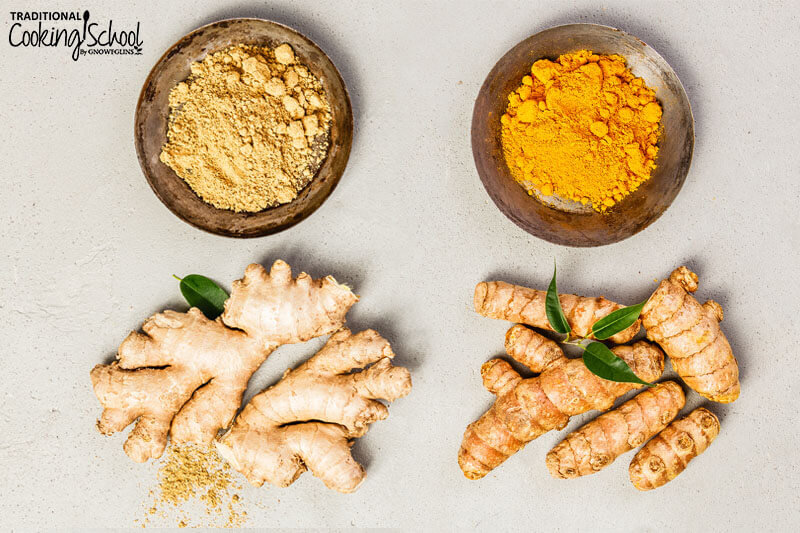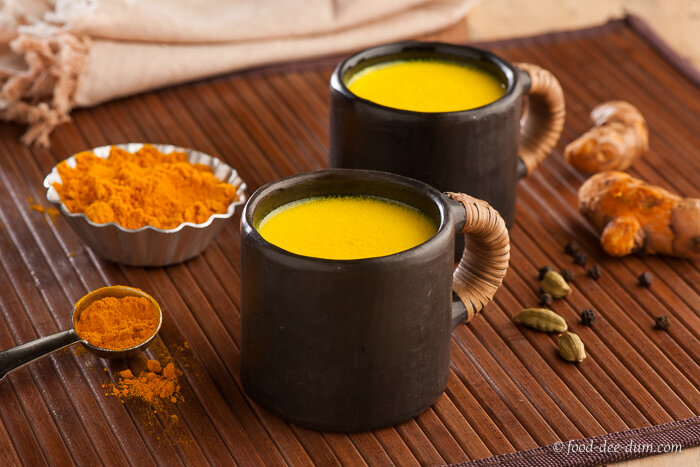The Cultural Appropriation of Turmeric
If you grew up in a Indian (or otherwise Desi/brown) household like I did, you know that haldi is worth its weight in gold. If you didn’t grow up in an Indian household, then you probably identify turmeric as the stuff that gives curry its yellow colour. But turmeric goes far beyond curry, both from a medical and social perspective. This sought-after spice has been part of trade wars and makes up a large industry in terms of food exports from India to the rest of the world, and warrants more attention than perhaps it gets right now. Here’s why…
Before the LA-esque hipsters of the Western world re-discovered this magical substance and started adding it to their drinks, American scientists tried to take credit for discovering the health benefits of this spice, with blatant disregard for its well-known ayurvedic history from the Indian subcontinent. In 1995, researchers from the University of Mississippi Medical Center obtained a patent for turmeric, claiming the benefits of the oral and topical use of turmeric powder (1). Indian scientists argued that these researchers were “poaching on… ancient healing techniques” and misappropriating generations-old traditional knowledge (2). “India’s Council of Scientific and Industrial Research (CSIR)… argued that turmeric, a native Indian plant, had been used for centuries by its people for wound healing, and so lacked the “novelty” criterion required for patenting” (3). They successfully got the US Patent and Trademark Office (PTO) to withdraw the patent in 1997 (4).
Before this fiasco in the Western world, turmeric has had a long, rich, and multi-purposed history in the Eastern world. From a large range of health benefits, as modern science has since discovered and re-discovered, to an important role in Indian cooking and social culture, turmeric is the epicentre of the Indian household, if a spice could ever hold that coveted position.
Turmeric root, in its whole form, looks a lot like ginger. But unlike the pale yellow of ginger, the flesh of turmeric root is bright orange inside its brownish skin, and much orangier than the bright yellow powder we are more accustomed to seeing in our homes or at the supermarket. It undergoes a rigorous process from root to powder to packaging in order to be available in Indian (and now other) households all over the world.
Turmeric prides itself with numerous health benefits and medicinal properties, which our ancestors have arguably known for a lot longer than the last two decades or so, which is when it started to gain worldwide fame.
Turmeric has anti-inflammatory properties. Chronic inflammation is sometimes a standalone problem, but more often, it is prevalent as one of the many factors in another disease and may increase discomfort experienced by the subject. “Therefore [turmeric] that can help fight chronic inflammation [and] is of… importance in preventing and even treating [such] diseases” (5).
Turmeric applied topically can help with many external bodily ailments. As a part of what might be called ‘folk medicine’ in modern and scientific times, applying turmeric powder or paste to the body can cure ailments such as “sprains, cuts, injuries, swellings, skin infections, bites of insects… [and] wounds” (6).
Turmeric has many digestive benefits. Used in many Indian foods, it’s safe to say that turmeric is pretty much a staple in the diet, as a spice added to cooking vegetables, lentils, curries, and more. This is because turmeric aids the digestion of food and “is said to be effective against flatulence, indigestion [and] diarrhoea” (7).
Turmeric helps treat common colds and other ailments. In many Indian households, there is a tradition of drinking hot milk with turmeric in it (haldi doodh translating as ‘turmeric milk’) when one is suffering from a common cold or other ailment. Previously considered a home remedy or old wives’ tale, recent studies have shown that turmeric has “antibacterial, antiviral and antifungal properties which may help prevent and fight infections” (8). Haldi doodh doesn’t taste particularly good (speaking from personal experience), but it works.
My grandmother has been a medical doctor (not of alternative treatments, rather as an actual physician with her Bachelor of Medicine and Bachelor of Surgery), and she is just one of the many professionals that swear by the benefits of turmeric. It’s evident that the medicinal properties of turmeric are undeniable, but what about the other aspects of this spice and its route into Western culture and society?
As a daughter of immigrant parents that arrived in Canada at the start of the new millennium, I found myself constantly balancing my two identities: the East me (my roots, because that’s where I was born), and the West me (my home, because this is home for me now). When I was in elementary school, me and some other South Asian-origin kids were ridiculed when we brought roti-sabzi (flatbread and cooked vegetables, an Indian staple meal) to school because it confirmed our spot as a part of the “curry-scented population” stereotype (9). Even today, many Indians and others from the subcontinent are accused of wearing “l’eau de curry,”(10) on their clothes. Yet, the spice behind all of this negativity, cultural stereotyping, and bullying, has recently risen to sudden glamour and fame. Potentially the same people that were part of our generation in elementary school, making fun of our food, our haldi-stained shirts, and our so-called curry-smelling homes, are now sitting at hipster cafes and bistros throughout the Western world and having revelations over chai teas and turmeric lattes… but these are not their revelations to have! Turmeric lattes, better known as haldi doodh to the average Indian household, are so glorified. Turmeric is even referred to as an “exotic” and fascinating thing, by some Western medical professionals, referring to turmeric casting spells, effectively equating it to witchcraft and wizardry (11).
We’re not jealous that haldi doodh didn’t get as much fame before it got a name-change to turmeric latte (that, too, with a dropped ‘R’ so it’s somehow pronounced ‘too-muric’). Rather, we’re upset that the same thing about which kids from brown households would get made fun of, has now travelled into quaint, hipster coffee shops across North America and made it ‘big’ in social media and pop culture. It’s cultural appropriation… is what it is.
References:
Jayaraman, K. S. “US Patent Office Withdraws Patent on Indian Herb.” Nature News, Nature Publishing Group, 4 Sept. 1997, https://www.nature.com/articles/37838.
Chengappa, Raj. “Patents: India Wins a Victory over Turmeric but the War Is On.” India Today Magazine, Living Media India Limited, 14 May 2013, https://www.indiatoday.in/magazine/science-and-technology/story/19970908-patents-india-wins-a-victory-over-turmeric-but-the-war-is-on-832438-1997-09-08.
Jayaraman, K. S. “US Patent Office Withdraws Patent on Indian Herb.” Nature News, Nature Publishing Group, 4 Sept. 1997, https://www.nature.com/articles/37838.
Chengappa, Raj. “Patents: India Wins a Victory over Turmeric but the War Is On.” India Today Magazine, Living Media India Limited, 14 May 2013, https://www.indiatoday.in/magazine/science-and-technology/story/19970908-patents-india-wins-a-victory-over-turmeric-but-the-war-is-on-832438-1997-09-08.
Gunnars, Kris. “10 Proven Health Benefits of Turmeric and Curcumin.” Healthline, Red Ventures Company, 13 July 2018, https://www.healthline.com/nutrition/top-10-evidence-based-health-benefits-of-turmeric.
“Chapter 28: Turmeric, Section 4.2: Uses in Folk Medicine.” Handbook of Herbs and Spices, by Bhaskaran Sasikumar, Second ed., Woodhead Publising, 2012, https://www.sciencedirect.com/science/article/pii/B9780857090393500281.
Chapter 28: Turmeric, Section 4.2: Uses in Folk Medicine.” Handbook of Herbs and Spices, by Bhaskaran Sasikumar, Second ed., Woodhead Publising, 2012, https://www.sciencedirect.com/science/article/pii/B9780857090393500281.
Petre, Alina. “10 Benefits of Golden (Turmeric) Milk and How to Make It.” Healthline, Red Ventures Company, 12 September 2018, https://www.healthline.com/nutrition/golden-milk-turmeric.
Kudva, Sonali. “Brown Girl Magazine.” Brown Girl Magazine, 17 May 2016, http://www.browngirlmagazine.com/2016/05/turmeric-latte-craze-amusing-south-asians/.
Kudva, Sonali. “Brown Girl Magazine.” Brown Girl Magazine, 17 May 2016, http://www.browngirlmagazine.com/2016/05/turmeric-latte-craze-amusing-south-asians/.
Glassman, Keri. “Tumeric: Why This Spice Is a Good Medicine.” WebMD, https://www.webmd.com/food-recipes/features/why-ls-turmeric-good-for-me.



